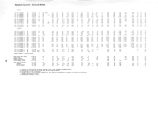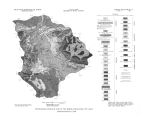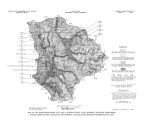| OCR Text |
Show " i 1 1 1 1 r ( 0- 4- 4) 14 a bb- 1 ~\ 1 1 1 1 1 1 1 1 1 1 1 1 1 1 r 3 5 7 9 1 1 h 13 1 5 1 7 + 1 5 + 1 0 + 5 C - 5 - 1 0 - 1 5 - 20 Cumulative departure from normal annual precipitation at Heber 193536 37 38 39 40 41 42 43 44 45 46 47 48 49 50 51 52 53 54 55 56 57 58 59 60 61 62 63 64 65 661967 Figure 12.- Water levels in selected wells in Heber Valley and cumulative departure from the 1931- 60 normal annual precipitation at Heber. about balanced by discharge. Very wet or very dry years are reflected by unusually high or low water levels, but the peaks of each graph cluster about an average line, and there is no indication of a significant long- term change in water levels in Heber Valley. Storage.- The total volume of water in storage in an aquifer can be calculated by multiplying the total volume of the aquifer by the total porosity of the aquifer material, but such a figure is of little value, because part of the water in an aquifer is held tightly by molecular forces and cannot be recovered. The recoverable water in storage, that is, the volume of water that can be removed from storage by wells, is equal to the product of the volume of the aquifer and the specific yield of the aquifer materials. It is difficult to get an accurate estimate of the total volume of alluvial fill in a valley, but the volume of water theoretically recoverable from the upper 100 feet of the aquifer can be calculated. Available information on the thickness of the valley fill in Heber Valley indicates that it extends at least 50 feet below the water table under most of the valley and at least 100 feet 32 |
































































































